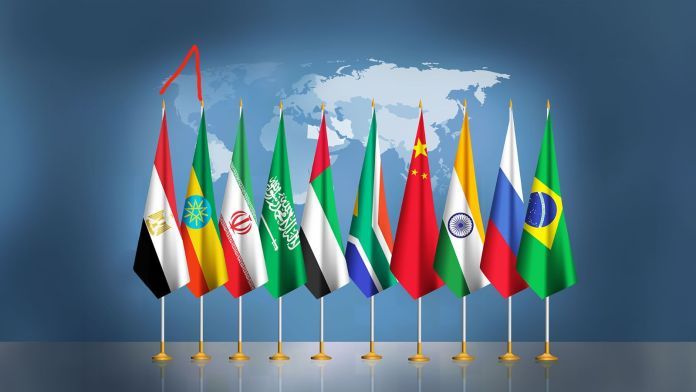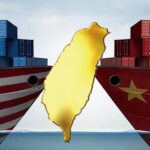Geopolitical Tensions and Rivalries in 2025: A Global Landscape of Strife
Geopolitical tensions and rivalries continue to be a defining feature of global politics in 2025, as nations jockey for influence, power, and strategic advantages. These tensions are influenced by a combination of historical grievances, territorial disputes, economic interests, and ideological differences. The world has seen a shifting balance of power, with major global players like the U.S., China, Russia, and the European Union asserting their dominance while smaller regional players attempt to carve out their place in the international system.
In this article, we will explore some of the key geopolitical tensions and rivalries shaping 2025, examining the sources of these conflicts, their impact on global relations, and the potential for resolution.
1. U.S. vs. China: The Battle for Global Dominance: Geopolitical Tensions and Rivalries
The rivalry between the United States and China remains one of the most consequential geopolitical struggles of the 21st century. This ongoing competition spans multiple domains, including economic, military, technological, and ideological spheres.
Economic Rivalry; Geopolitical Tensions and Rivalries
China’s rapid rise as an economic superpower has led to growing tensions with the U.S. The trade war initiated in 2018 continues to have lingering effects, with both countries imposing tariffs and seeking to reduce dependence on one another. While China has made strides in advancing its technological capabilities, the U.S. is working to counter China’s dominance in critical sectors like semiconductors, artificial intelligence, and 5G networks.
The ongoing competition in global markets is also reflected in the Belt and Road Initiative (BRI), China’s ambitious global infrastructure plan, which is seen by many as an effort to increase China’s geopolitical influence. The U.S., on the other hand, has sought to counter China’s economic expansion by strengthening ties with regional partners and forming alliances to secure global trade routes and maintain influence in international organizations.
Military Rivalry; Geopolitical Tensions and Rivalries
Tensions between the two countries have intensified in the Indo-Pacific region, particularly around Taiwan. China views Taiwan as a breakaway province that must be reunified with the mainland, and it has warned the U.S. against intervening in any potential military action to defend Taiwan. In response, the U.S. has bolstered its military presence in the region, conducting joint military exercises with allies like Japan, South Korea, and Australia. The rivalry between the U.S. and China is not only playing out in the South China Sea but also in global security issues like cyber warfare, space exploration, and military technologies.
Ideological Differences; Geopolitical Tensions and Rivalries
Beyond economic and military concerns, the U.S. and China are engaged in an ideological battle. The U.S. promotes a liberal democratic model, while China pushes for an authoritarian system that prioritizes state control and economic growth. This ideological divide has been most evident in areas like human rights, with the U.S. consistently criticizing China’s treatment of its minority populations, such as the Uighur Muslims, and its policies in Hong Kong and Tibet. In return, China accuses the U.S. of interfering in its domestic affairs and stoking tensions around Taiwan.
2. Russia and the West: A Cold War Redux: Geopolitical Tensions and Rivalries
The Russia-West rivalry has been a defining feature of global politics since the collapse of the Soviet Union in 1991. However, the annexation of Crimea in 2014, the ongoing conflict in Ukraine, and Russia’s military interventions in Syria have reignited tensions between Russia and Western powers.
Ukraine Conflict: Geopolitical Tensions and Rivalries
The war in Ukraine remains one of the most significant flashpoints in Russia-West relations. Following Russia’s invasion of Ukraine in 2022, the West has imposed severe economic sanctions on Russia and provided military aid to Ukraine. Despite the ongoing conflict, Russia has continued to assert its dominance in the region, with President Vladimir Putin warning of the possibility of broader military action. Western nations, particularly the U.S. and NATO, have increased military support to Ukraine in an effort to prevent Russia from expanding its influence in Eastern Europe.
Energy and Economic Sanctions; Geopolitical Tensions and Rivalries
Energy resources play a crucial role in the Russia-West rivalry. Europe has historically relied on Russian natural gas and oil, but following the war in Ukraine, many European nations have sought to reduce their dependence on Russian energy supplies. In response, Russia has turned to new markets in Asia, particularly China, to maintain its energy exports.
The economic sanctions imposed on Russia by Western nations have also had a significant impact on the Russian economy, though Russia has managed to adjust through new trade routes and alliances. Despite these sanctions, Russia remains a key player in global energy markets, and its military capabilities continue to pose a significant challenge to the West.
Cybersecurity and Disinformation; Geopolitical Tensions and Rivalries
Russia’s use of cyberattacks and disinformation campaigns against Western democracies has further exacerbated tensions. Allegations of Russian interference in U.S. elections and the use of social media platforms to spread divisive content have led to a growing concern over cybersecurity and the integrity of democratic institutions.
3. China and India: A Growing Rivalry: Geopolitical Tensions and Rivalries
The rivalry between China and India, two of the world’s most populous countries and largest economies, has been escalating in recent years. While the two nations share historical, cultural, and economic ties, their relationship has been marred by territorial disputes, strategic competition, and economic rivalries.
Border Disputes; Geopolitical Tensions and Rivalries
The most significant point of contention between China and India is the disputed border regions in the Himalayas. The 1962 Sino-Indian War and the subsequent skirmishes along the Line of Actual Control (LAC) continue to fuel tensions. In recent years, both countries have engaged in military standoffs, particularly in the Galwan Valley, leading to casualties on both sides. Both China and India have been fortifying their positions along the border, further escalating the risk of conflict.
Economic Competition; Geopolitical Tensions and Rivalries
China and India are economic competitors, with China historically having a technological edge over India. However, India has sought to leverage its growing tech industry and digital infrastructure to challenge China’s dominance, especially in the areas of software development and innovation. India has also become a critical part of global supply chains, positioning itself as an alternative to China for manufacturing in industries like electronics and pharmaceuticals.
Strategic Alliances; Geopolitical Tensions and Rivalries
In response to China’s growing influence, India has sought closer strategic ties with the U.S. and other regional powers, such as Japan and Australia, through platforms like the Quad (Quadrilateral Security Dialogue). This alliance aims to counterbalance China’s assertiveness in the Indo-Pacific region. However, India’s engagement with China remains complex, as both countries are major players in the global economy, and cooperation is necessary in areas like trade and climate change.
4. Middle East Rivalries: Iran, Saudi Arabia, and the U.S.: Geopolitical Tensions and Rivalries
The Middle East remains a volatile region, with ongoing rivalries between key powers such as Iran, Saudi Arabia, and the U.S. The competition for regional dominance, coupled with religious and sectarian divides, continues to fuel instability.
Iran vs. Saudi Arabia; Geopolitical Tensions and Rivalries
The rivalry between Sunni-majority Saudi Arabia and Shia-majority Iran is a central feature of Middle Eastern geopolitics. This conflict is driven by ideological differences, regional power struggles, and competition for influence in countries like Syria, Yemen, and Iraq. The Saudi-Iranian rivalry has led to proxy wars, escalating tensions, and the continued instability of the region.
U.S. Influence and the JCPOA; Geopolitical Tensions and Rivalries
The U.S. has historically aligned itself with Saudi Arabia in countering Iran’s influence in the region. Tensions escalated after the U.S. withdrew from the Iran Nuclear Deal (JCPOA) in 2018, leading to further diplomatic isolation of Iran. However, in 2025, the U.S. and Iran are engaged in renewed talks to revive the nuclear deal, which could have significant ramifications for the region’s stability.
5. Europe’s Shifting Geopolitical Role; Geopolitical Tensions and Rivalries
Europe’s geopolitical influence has been challenged in recent years by both internal and external pressures. While the European Union (EU) has sought to maintain unity, it faces challenges from populist movements, economic difficulties, and rising nationalism. Additionally, Brexit has reshaped the EU’s relationship with the UK, and tensions with Russia remain high.
EU and NATO Expansion; Geopolitical Tensions and Rivalries
As Europe grapples with internal divisions, its role in NATO and the global security architecture is under increased scrutiny. The ongoing crisis in Ukraine has tested NATO’s unity and its ability to confront Russia’s military threat. In the wake of these challenges, the EU is focusing on strengthening its defense capabilities and diversifying its security relationships beyond traditional alliances.
Conclusion: A Complex Web of Rivalries: Geopolitical Tensions and Rivalries
Geopolitical tensions and rivalries in 2025 are multifaceted, involving a combination of historical grievances, strategic calculations, and shifting power dynamics. As major powers vie for global influence, the potential for conflict remains high, but diplomatic and economic efforts continue to play a crucial role in preventing escalation. The outcome of these rivalries will have far-reaching consequences, not only for the countries involved but for the stability of the international system as a whole.










